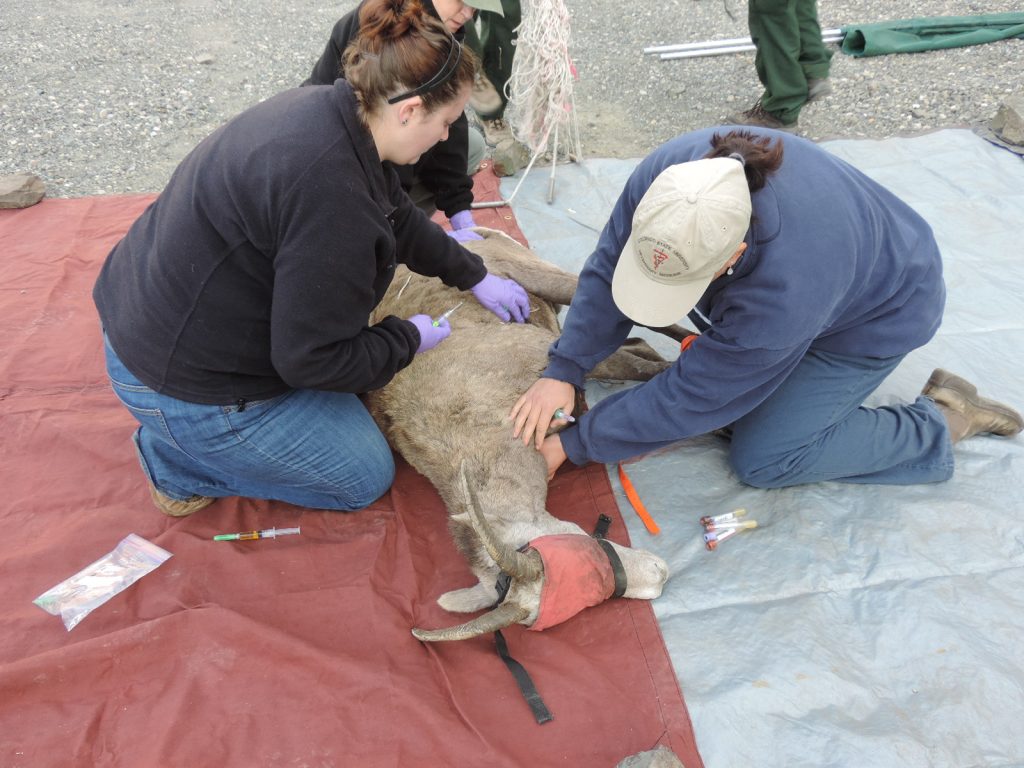
Quilomene Bighorns Test Negative After Run-in With Domestic Ewe; Live Captures To Be Considered
WDFW says lab results came back negative on 12 bighorns that had to be lethally removed on Monday after a diseased domestic sheep came in contact with their herd.
“Big sigh of relief,” said state big game manager Brock Hoenes this afternoon.

However, he confirmed it couldn’t be ruled out that the ewe had interacted with other bighorns in the Quilomene Herd than those killed on Monday.
“Unfortunately, we really can’t, which is why additional live testing will be an option considered moving forward,” Hoenes said.
A meeting will be held this afternoon to talk about next steps, he said.
Wildlife managers are worried for two reasons.
Bighorns are highly susceptible to Mycoplasma, a bacteria carried by domestic sheep – including this particular ewe – and which causes often-fatal pneumonia in wild sheep.
And this is about the time of year the bighorn breeding seasons starts, with rams roaming widely in search of mates.
With no cure and impacts lingering for years, managers have to resort to taking out large numbers – if not an entire herd – to eradicate the disease and keep it from spreading.

WDFW said that removing mostly rams for testing “should have minimal effect on the overall population.”
The fast-moving story first came to light on Monday.
According to WDFW, an off-duty Kittitas County Sheriff’s Office deputy observed the ewe with seven rams on Sept. 26 at Hole in the Wall, on the Mid-Columbia at the very northern end of Gingko Petrified Forest State Park.
On Oct. 1, biologists became aware of the situation and tried to locate the ewe on Oct. 5 by boat but failed, then came back the next day in a helicopter and shot it.
Samples were rushed to a Washington State University lab where testing confirmed it carried the bacteria.
On Monday WDFW sent out a press release that said up to 15 bighorns could be killed for testing and an additional 10 to 15 could be captured for more sampling.
That afternoon 12 were lethally removed – six adult rams, three juvenile rams and three ewes – and samples sent to WSU for testing.
Results were delayed by delivery issues but came back today as negative.
The overall Quilomene Herd is 220 to 250 sheep strong. Representing 12 to 15 percent of the state’s overall population, they roam the breaks of the Columbia from Malaga to Vantage.
At the southern end of their range, where the ewe came into contact with the rams, there are about 50 bighorns, according to WDFW.
The herd hosted the most any-ram special permits of any in the state this year, five.
The domestic ewe had been missing from its herd since at least Sept. 13. There are no grazing leases in the vicinity of Hole in the Wall but there are USFS and DNR allotments near Blewett Pass, far to the northwest.
